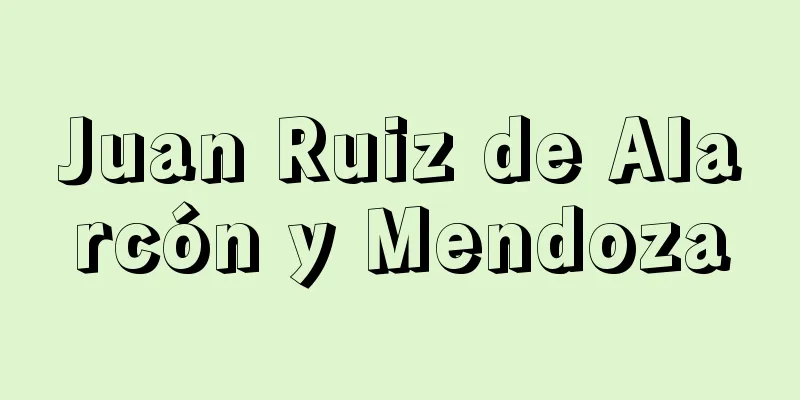Yabusame

|
This is an archery technique in which a horse is galloped while shooting three targets in succession with a kaburaya (a whistling arrow). The name is said to be a corrupted version of "Yabaseme" (arrow-racing horse). It was held in April 1096 (Eicho 1) at Toba Palace's riding grounds in the presence of Emperor Shirakawa, and in May of the same year at Koyoin, suggesting that it was popular among warriors in Kyoto at the time. Then, in the Kamakura period, with the encouragement of Shogun Minamoto no Yoritomo and the unification of the legal rules, it became popular in Kamakura as well. On the other hand, it was also linked to festivals and Shinto rituals from an early period, and by the 12th century it had become a regular event and was dedicated to the Jonanji Temple Festival, the May Festival at Shin Hiyoshi Shrine, and the Hojoe Festival at Tsurugaoka Hachimangu Shrine. There is also a record of the suspension of the May and August Shinto ritual of Yabusame at Kawakami Shrine in Hizen Province in 1162 (Oho 2) (Heian Ibun), which suggests that it was linked to Shinto rituals surprisingly early, even in the provinces. Gradually, this Shinto ritual of Yabusame became mainstream. According to historical documents, mainly from the Muromachi period, three targets made of cypress boards measuring about 54.5 centimeters square were set up on target poles in a riding ground about 218 meters (2 cho) long, spaced about 36.4 meters (20 ken), 72.7 meters (40 ken), and 72.7 meters apart from the starting point of the horse. Initially, the targets were held by officials, but later they were set up in the ground a few meters away from the "saguri" (track) where the horses ran. There is a famous story about how Kumagai Naozane, who thought he was of a lower rank than the archers at the yabusame ceremony at Tsurugaoka Hachimangu Shrine, refused to be a target setter (Azuma Kagami). Archers usually wear a suikan (a traditional Japanese traditional garment worn by a warrior), igote (a traditional gauntlet), gloves, mukabaki (a traditional garb), and monoiguts (a traditional archery clog). They wear a ayaigasa (a traditional Japanese hat) over an eboshi (a traditional Japanese hat), a tachi (a traditional Japanese sword), a kachi (a traditional Japanese sword), and an ebira (a traditional Japanese quiver). The number of archers varies from a few to a dozen. Yabusame peaked in the Kamakura period and then declined among samurai. In the Edo period, however, the eighth shogun, Tokugawa Yoshimune, revived it based on ancient records and passed it down to the Ogasawara family. The style of Yabusame is called Shingi Yabusame and is still passed down today as a designated intangible cultural property of Shinjuku Ward. The Yabusame at Tsurugaoka Hachimangu Shrine, which is dedicated in accordance with ancient customs on September 16 every year, is also famous. In addition, there are many things in various places that have been passed down in a form that has been significantly changed from their original form. [Takayoshi Miyazaki] Yabusame at Tsurugaoka Hachimangu Shrine has been a tradition since the Kamakura period. It is performed twice a year, at the Kamakura Festival in April and the Yabusame Shinto Ceremony in September. An archer dressed in samurai hunting attire gallops on horseback and shoots at three targets placed on the riding ground. The photo shows Yabusame at the Kamakura Festival. Kamakura City, Kanagawa Prefecture © Kamakura City Tourism Association "> Yabusame Ritual at Tsurugaoka Hachimangu Shrine Source: Shogakukan Encyclopedia Nipponica About Encyclopedia Nipponica Information | Legend |
|
馬を走らせながら、雁股(かりまた)をつけた鏑矢(かぶらや)で三つの的を順次射る射技。その名は「矢馳せ馬(やばせめ)」の転訛(てんか)という。1096年(永長1)4月には白河(しらかわ)上皇臨席のもとに鳥羽(とば)殿の馬場で、同年5月には高陽院で催されており、当時京洛(けいらく)の武者たちの間に普及していたことがうかがわれる。ついで鎌倉時代に入ると、将軍源頼朝(よりとも)の奨励と法式の統一化もあって、鎌倉の地でも盛んになった。一方、早くから祭礼、神事とも結び付き、城南寺祭や新日吉(ひえ)社の五月会(さつきえ)、鶴岡八幡宮(つるがおかはちまんぐう)放生会(ほうじょうえ)などでも12世紀中には恒例化して奉納されている。また、たとえば肥前国河上宮(かわかみぐう)でも、1162年(応保2)には5、8月の神事流鏑馬が中絶している記録もあり(『平安遺文』)、地方でも神事との結び付きは意外に早かったことがうかがわれる。そしてしだいにこの神事の流鏑馬が本流となっていった。 おもに室町時代の故実書によると、長さ約218メートル(2町)の馬場に、的串(まとぐし)にさした約54.5センチメートル四方の檜(ひのき)板の的を、馬の出発点から約36.4メートル(20間)、72.7メートル(40間)、同じく72.7メートルの間隔で3本立てる。当初は的を役人が持っていたが、のちには馬の走る「さぐり」から数メートル離して地面に差し立てた。鶴岡八幡宮放生会の流鏑馬で、射手より地位が低いと思った熊谷直実(くまがいなおざね)が、この的立の役を拒否した話は有名である(『吾妻鏡(あづまかがみ)』)。 射手装束は、普通、水干(すいかん)に射籠手(いごて)、手袋、行縢(むかばき)、物射沓(ものいぐつ)を着し、烏帽子(えぼし)の上に綾藺笠(あやいがさ)をかぶり、太刀(たち)、腰刀を帯して箙(えびら)を負う。員数は数騎から十数騎まで一定していない。流鏑馬は鎌倉時代を最盛期に以後武士の間では衰退するが、江戸時代に至って、8代将軍徳川吉宗(よしむね)が古記録などをもとに再興して小笠原(おがさわら)家に伝え、その法式は新儀流鏑馬とよばれ、今日も新宿区無形文化財に指定されて継承している。また、毎年9月16日に古式にのっとって奉納される鶴岡八幡宮の流鏑馬も著名である。このほか、各地には本来の姿とはかなり変化した形で伝わっているものも少なくない。 [宮崎隆旨] 鎌倉時代より伝統を受け継ぐ鶴岡八幡宮の流鏑馬。年に二度、4月の鎌倉まつりと9月の流鏑馬神事で披露される。武士の狩装束に身を包んだ射手が馬で駆けながら、馬場に配された三つの的を射抜く。写真は鎌倉まつりの流鏑馬。神奈川県鎌倉市©鎌倉市観光協会"> 鶴岡八幡宮の流鏑馬神事 出典 小学館 日本大百科全書(ニッポニカ)日本大百科全書(ニッポニカ)について 情報 | 凡例 |
>>: Yabusame (English spelling) short-tailed bush warbler
Recommend
Hyperpregnancy - Kajoninshin
…When such animals are bred, implantation of embr...
Pécourt, L. (English spelling) PecourtL
…In the early days, Pierre Beauchamp (1636-1705) ...
Patriotic Bloodshed - Patriotic Bloodshed
…This is why his criticism of Symbolism, Axel'...
Emperor Gomurakami
Year of death: Oan 1/Shohei 23.3.11 (1368.3.29) Ye...
Ohara school
It is one of the three major schools of ikebana, ...
Camellia
…The camellia, one of the most representative flo...
Svyatopolk-Mirskii, PD (English spelling) SvyatopolkMirskiiPD
...This war was completely unpopular with the peo...
Heavy Duty Nippers
...A tool used to cut wire. There are ordinary ni...
Sweet potato long-winged stink bug - Sweet potato long-winged stink bug
...They are herbivorous, but some species are als...
Atlas - Chizucho (English)
Also called an atlas or atlas. A collection of map...
lightning tube
...After a thunderstorm, these stone tools are of...
Lusaka - Lusaka (English spelling)
The capital of Zambia, southern Africa. It is loc...
Löwith, Karl
Born: January 9, 1897 in Munich Died May 24, 1973....
Sava (Serbian) (English spelling)
Around 1176 - 1235 Church leader and saint who ach...
Parker, EN (English spelling)
…The flow speed of the solar wind is slow at abou...









